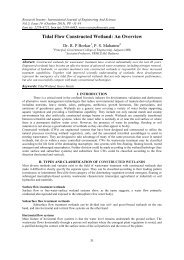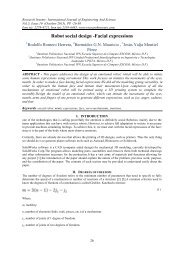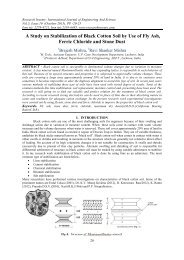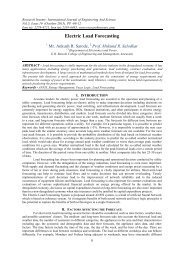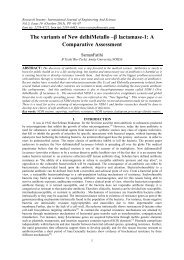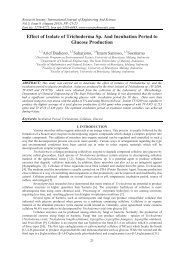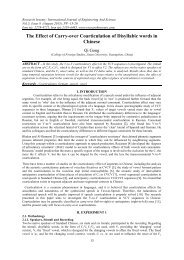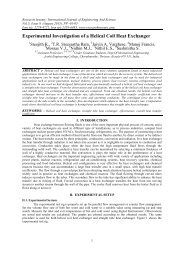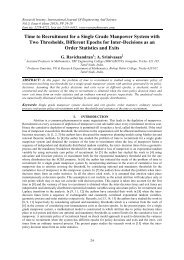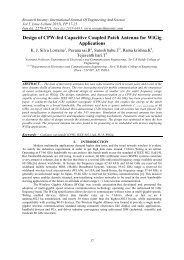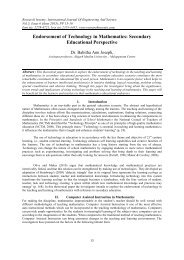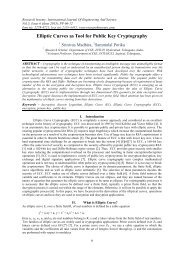Fuzzy Models for Teaching Assessment
- No tags were found...
Create successful ePaper yourself
Turn your PDF publications into a flip-book with our unique Google optimized e-Paper software.
<strong>Fuzzy</strong> <strong>Models</strong> For <strong>Teaching</strong>…<br />
Figure 2:The TFAM’s schemes<br />
A faculty group can be represented, as in the COG method, as a fuzzy set bin U, whose membership<br />
function has the graph the line of figure 2, which is the<br />
union of the line segments<br />
However, in case of the TFAM the analytical <strong>for</strong>m<br />
of is not needed <strong>for</strong> calculating the COG of the resulting area. In fact, since the marginal cases of the<br />
faculties scores are considered as common parts <strong>for</strong> any pair of the adjacent trapezoids, it is logical to count<br />
these parts twice; e.g. placing the ambiguous cases B+ and A- in both regions B and A. In other words, the<br />
COG methods, which calculates the coordinates of the COG of the area between the graph of the membership<br />
function and the OX axis, thus considering the areas of the “common “ triangles<br />
, only once, is not the proper one to be applied in the above<br />
situation.<br />
Instead , in this case we represent each one of the five trapezoids of figure 2 by its COG<br />
and we consider the entire area, i.e. the sum of the areas of the five trapezoids, as the system of these pointscenters.<br />
More explicitly, the steps of the whole construction of the TFAM are the following:<br />
1.Let<br />
be the percentage of the faculties whose per<strong>for</strong>mance was<br />
characterized by the grades F,D,C, and A respectively; then<br />
2. We consider the isosceles trapezoids with heights being equal to , in the way that has<br />
been illustrated in figure 2.<br />
3.We calculate the coordinates ( of the COG of each trapezoid as follows: It is well<br />
known that the COG of a trapezoid lies along the line segment joining the midpoints of its parallel sides a and b<br />
at a distance d from the longer side b given by<br />
, where h is the height (e.g. see[14]). There<strong>for</strong>e in our<br />
case we have = Also, since the abscissa of the COG of each trapezoid is equal to the abscissa<br />
of the midpoint of its base, it is easy to observe that<br />
4.We consider the system of COG’s i= 1, 2, 3, 4, 5 and we calculate the coordinates ( of the COG<br />
of the whole area S considered in figure 2 by the following <strong>for</strong>mulas ,derived from the commonly used in<br />
such a cases definition(e.g. see [15]):<br />
(4).<br />
In <strong>for</strong>mulas (4) ,I = 1, 2, 3, 4, 5 denote the areas of the corresponding trapezoids. Thus<br />
and<br />
There<strong>for</strong>e, from <strong>for</strong>mulas(4) we finally get that<br />
(5)<br />
5.We determine the area of COG lies as follows: For I j = 1, 2, 3, 4, 5, we have that<br />
, there<strong>for</strong>e , with the equality holding if, and only if .<br />
There<strong>for</strong>e<br />
+2<br />
=5 (6),<br />
9



